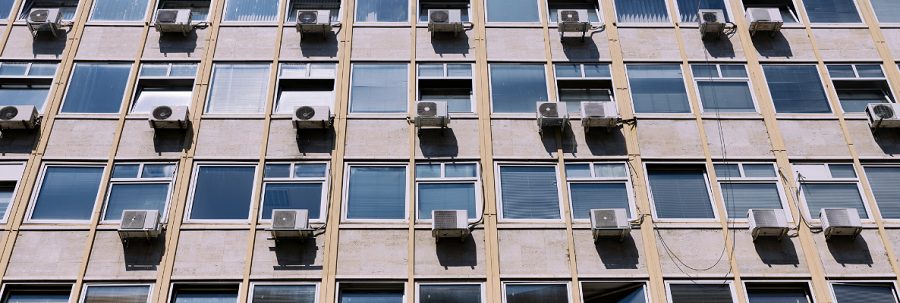The building sector is the sector with the most potential to reduce greenhouse gas emissions. The uptake of sustainable buildings with climate-smart cooling solutions can therefore play a major role in helping countries transition to low-emissions societies, which is crucial to tackle climate change.

To drive this forward, the United Nations Framework Convention on Climate Change (UNFCCC) secretariat held a series of four regional technical expert meetings between August 19 and 27, 2020 showcasing climate-friendly technology solutions for cooling systems in buildings and demonstrating innovative and on-the-ground actions. The meetings were organised by the Technology Executive Committee (TEC), Climate Technology Centre and Network (CTCN) and the Regional Collaboration Centres (RCCs), with the support of the Global Alliance for Buildings and Construction (GlobalABC).
According to the GlobalABC, greenhouse gas emissions from the use of energy by buildings account for some 20% of global emissions. This illustrates the pressing need to establish projects and policies to strengthen energy efficiency in the sector as governments prepare to submit their national climate action plans under the Paris Climate Change Agreement by the end of the year. To date, 104 out of 194 countries that signed the Paris Agreement committed to improve energy efficiency in buildings as part of their mitigation targets.
“As we move towards the review of our Nationally Determined Contributions under the Paris Agreement, climate smart cooling solutions can offer a huge opportunity in meeting our NDC goals and in the achievement of the Sustainable Development Goals,” said Peter Tarfa, Member of the Advisory Board of the Climate Technology Centre and Network and Director General of the Climate Change Department, Ministry of the Environment of Nigeria.
Tarfa now holds the position of Permanent Secretary, Ministry of Labour and Employment.
Africa
The Africa regional meeting held on August 19, 2020 highlighted how innovative climate smart cooling technology built on local expertise can deliver multiple benefits, including reducing the electricity load on fragile grids as well as reducing the cooling by using innovative materials that prevent solar heat gains.
The need for proper policy development to drive a faster transition was highlighted, for example by using governance tools such as the Rwanda Green Building Minimum Compliance System – a point-based system consisting of 29 indicators to help owners and developers choose green features based on building type, usage and associated benefits – as well as a long-term and continuous capacity building programme involving every stakeholder in the value chain.
Latin America and the Caribbean
The Latin America and the Caribbean meeting held on August 20 emphasised the critical role of governmentsin stimulating the uptake of climate smart cooling solutions. This includes incorporating sustainable cooling into their national climate plans and encouraging manufacturers to improve the energy efficiency of their cooling products by putting in place minimum energy performance standards for air conditioners.
Asia-Pacific
At the Asia-Pacific meeting on August 25, several national initiatives in the region were discussed, such as the India Cooling Action Plan launched in March 2019, which provides a 20-year perspective and outlines actions needed to provide access to sustainable cooling. Several financial instruments readily available to support climate smart cooling projects were highlighted, including green loans and sustainable bonds, and innovative financing mechanisms such as the Joint Crediting Mechanism (JCM) which facilitates the diffusion of leading low carbon technologies.
Eastern Europe and West-Asia
The building sector is the highest contributor to the energy consumption of most of the countries in the Eastern Europe and West-Asiaregion. In West Asia, the high average temperatures mean that approximately 80% of energy produced is used for cooling services. Specific solutions for climate-efficient cooling were discussed at theEastern Europe and West-Asia meeting on August 27, including bio-climatic design and thermal insulation. The importance of public awareness raising in Eastern Europe was also discussed, due to the region’s history of cheap energy prices for small consumers cross-subsidised by large consumers.
How will these outcomes be taken forward?
The outcomes of the meetings will be reported to a global Technical Expert Meeting, to be held on September 30, October 7 and 14, 2020, and reflected in the technical paper and summary for policy makers for 2020. The outcomes will also be analysed by the Technology Executive Committee, which will submit a recommendation to COP 26 in Glasgow next year on next steps and actions to be taken.
